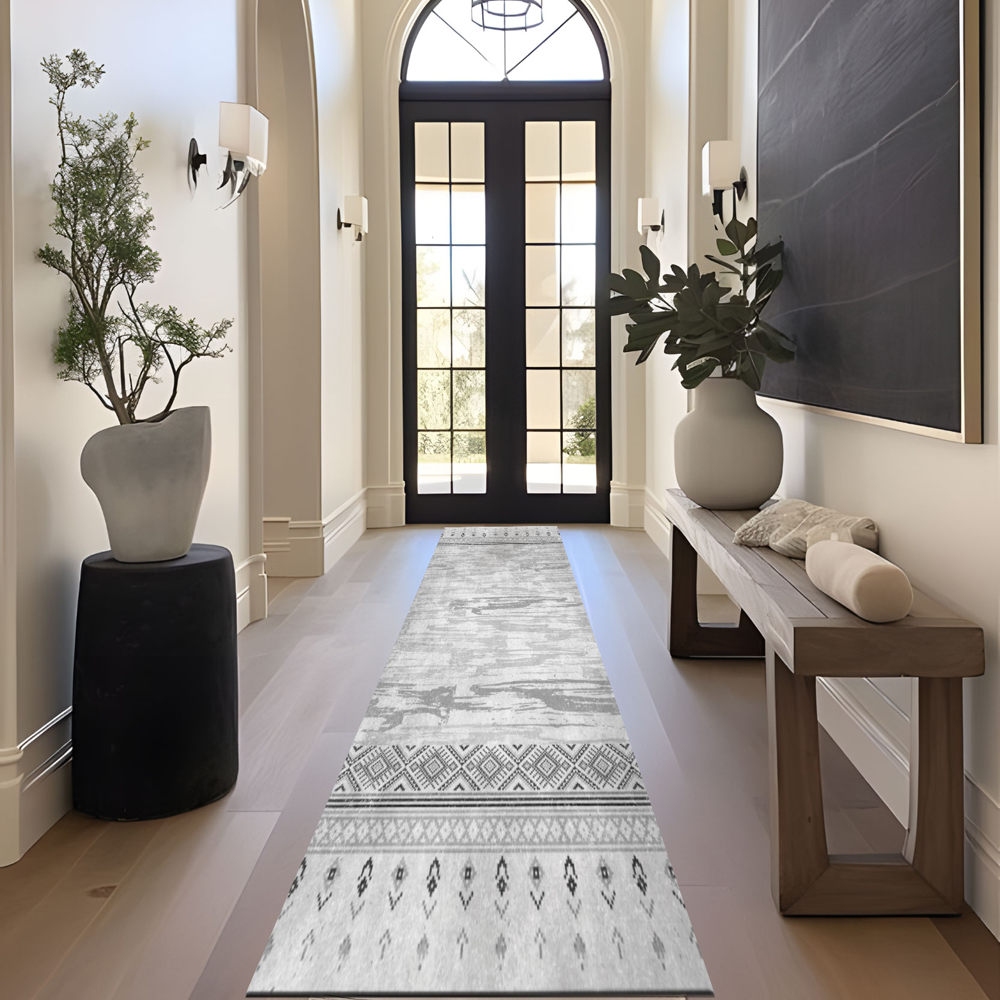 2025.11.19
2025.11.19
 Industry News
Industry News
Area rugs are far more than just floor coverings; they are essential design elements that define spaces, introduce texture and color, and provide a layer of comfort and warmth to any room. Choosing the right rug is a significant decision that impacts the overall aesthetic and functionality of your home.
Understanding the structure of a rug is key to appreciating its quality and intended use.
Pile (Surface): This is the visible, upper layer of the rug that you walk on.
Cut Pile: Loops are cut, resulting in an upright, soft fiber surface (e.g., shag, velvet).
Loop Pile: Fibers are woven into loops and left uncut (e.g., Berber).
Cut and Loop: A combination of both for a sculpted, textured appearance.
Backing (Foundation): The material that holds the fibers in place and provides structural integrity. Common backing materials include jute, cotton, and synthetic latex or rubber.
Weft and Warp: These are the foundational yarns in woven rugs. The warp runs lengthwise, and the weft runs across the width, interlocking to form the rug’s base fabric.
Several characteristics determine a rug's quality, durability, and feel.
|
Attribute |
Description |
Impact on Product |
|
Pile Height |
The length of the fiber loops or strands. |
Affects comfort, cleaning difficulty, and formality. Low pile (flatweave) is durable and easy to clean; High pile (shag) is plush and cozy. |
|
Density |
The amount of fiber yarn used per square unit. |
A higher density rug is more durable, resists crushing, and feels richer underfoot. |
|
Knot Count |
For hand-knotted rugs, the number of knots per square inch (KPSI). |
A higher KPSI signifies greater detail, intricacy, and quality, leading to a higher price point. |
|
Construction Method |
How the rug is made (see next section). |
Dictates durability, texture, pattern clarity, and price. |

The material of an area rug is perhaps the most crucial factor, influencing its look, feel, and performance.
Wool: Highly prized for its softness, natural stain resistance, durability, and excellent appearance retention. It is a premium choice.
Cotton: Often used for flatweave and braided rugs (like dhurries). It is soft, washable, and affordable, but less durable than wool.
Jute/Sisal/Seagrass: Plant fibers that offer a natural, coarse texture. They are extremely durable and environmentally friendly, ideal for high-traffic areas, but may be rougher and absorb moisture.
Silk: Luxurious and extremely soft, offering a beautiful sheen. It is used in high-end, often decorative rugs, as it is less durable than wool.
Polypropylene (Olefin): The most common synthetic fiber. It is very affordable, highly stain-resistant, fade-resistant (great for sunrooms), and easy to clean. However, it can feel less soft than wool.
Nylon: The strongest and most durable synthetic fiber, excellent for high-traffic commercial or residential areas. It resists crushing and maintains its shape well.
Polyester: Known for its vibrant color capabilities and luxurious, soft feel. It offers good stain resistance but is generally less durable than nylon.
Viscose (Rayon/Bamboo Silk): Often used to mimic the sheen and softness of silk at a lower cost. It can be susceptible to moisture damage and is best for low-traffic areas.
How a rug is made directly affects its longevity, price, and texture.
Hand-Knotted: The most labor-intensive method, where individual knots are tied by hand onto the warp and weft. These are the most durable, highest quality, and most expensive rugs, often becoming family heirlooms (e.g., Oriental and Persian rugs).
Hand-Tufted: Loops of fiber are punched through a backing fabric using a handheld tool (a "tufting gun"). A secondary backing and an adhesive are then applied. They are faster to produce and more affordable than hand-knotted rugs. They may shed more initially.
Woven (Loom-Woven/Machine-Woven): Made on large, automated power looms. This is a very efficient and cost-effective method, producing highly uniform and durable rugs, often from synthetic fibers.
Flatweave: These rugs have no pile, as the horizontal (weft) and vertical (warp) threads are tightly interlaced. They are reversible, very durable, and thin, making them excellent for layering or placement under dining tables (e.g., kilims, dhurries).
Area rugs come in standard sizes and various shapes to fit different room layouts.
Standard Sizes: The most common sizes include 5′×8′, 8′×10′, and 9′×12′. The size is crucial for properly anchoring furniture and defining a space.
Shapes: While rectangular is standard, Round rugs can soften a space or highlight a circular feature (like a pedestal table). Runners are narrow, long rugs specifically designed for hallways, staircases, and kitchens.
Thickness: The rug's overall thickness (pile + backing) affects clearance for doors and placement under furniture.
By understanding these product-focused details—from the choice of fiber to the construction technique—consumers can make informed decisions that result in a beautiful and enduring addition to their interior design.